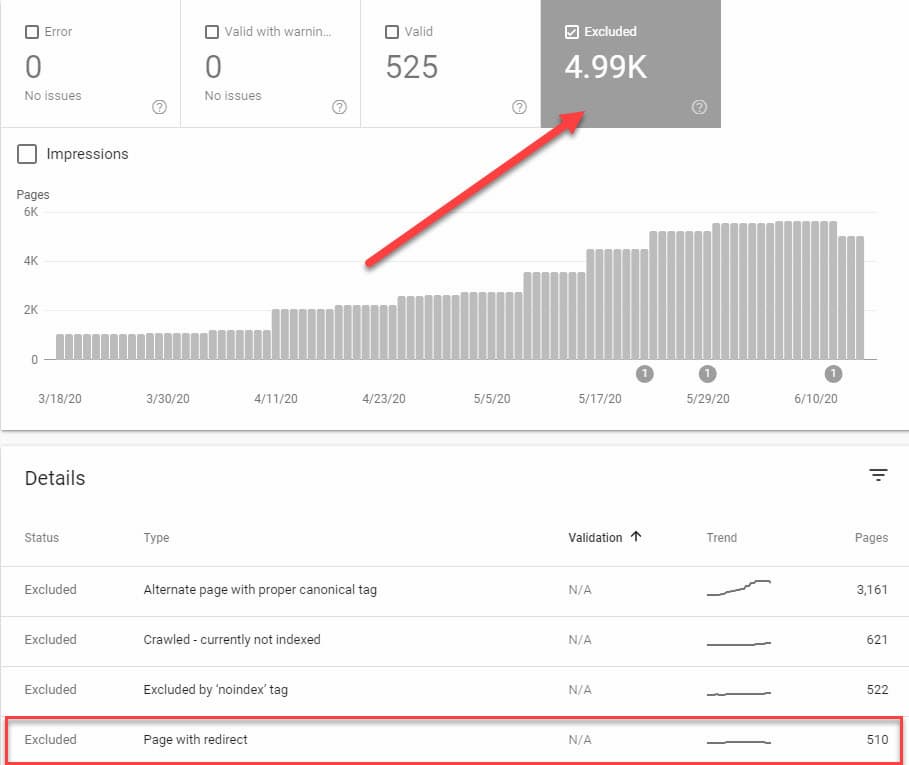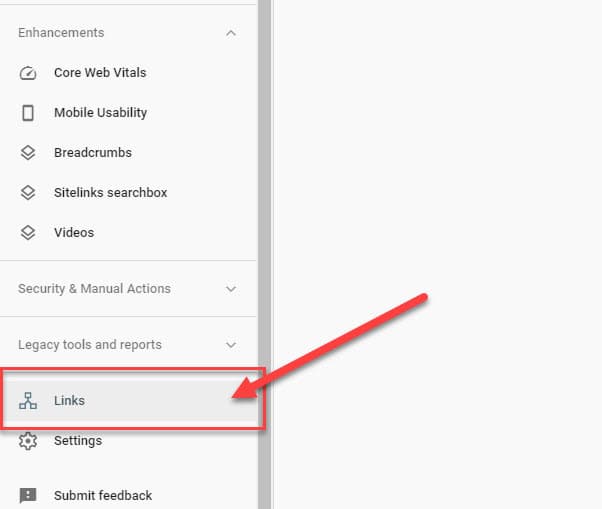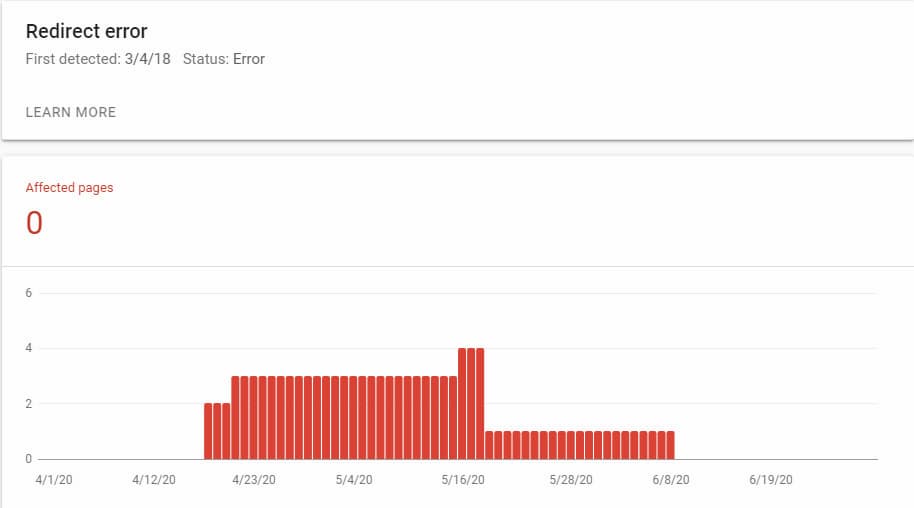Written By:
Ryan Sylvestre
While redirects can make more problems than solutions, they are a crucial part of all websites, and understanding how to use them correctly can be a powerful tool. In this blog post, we are going to go over:
-
Precisely what a redirect is
-
The different kinds of redirects
-
How to safely use redirects for SEO
-
Seven questions you can ask yourself to self-audit your website
Redirects can become a tangled mess of confusion for some websites that aren’t putting redirect best practice to use. Poorly implemented redirects can create a bad user experience for your users, leaving them frustrated.
Are redirects the only issue with your site? Use our 187 Point Self-Audit Checklist to find out!

By the end of this post, you will be able to implement redirects with confidence, keep things running smoothly, and have a better idea of how your site redirects are set up and performing.
What is a redirect?
A redirect is a method used to make a single page on your website available under multiple URLs. When a browser attempts to open a page that has been redirected, it will open up the new page with the new URL displayed.
Redirects are commonly used when one or more pages share similar content and are consolidated or when a page is no longer valid, and you created a replacement for that content somewhere else on your site.
What are the different kinds of redirects?
There are a few different kinds of redirects you will commonly see. Why are there so many? The variety of redirects is primarily because each type sends a different message to the browser when it’s triggered. Even though there is more than just one, you will mainly use the 301 redirect.
1. 301 Permanent Redirect
The 301 redirect tells the browser the content that used to be here has permanently moved, and all ranking power should be sent to the final destination page. You can apply this when you remove a page from your site or consolidate content.
2. 302 Found
The 302 redirect is often confused with a temporary redirect because it’s pretty vague. The 302 code means that the content you’re looking for is found, but it’s no longer in the same location.
3. 307 Temporary Redirect
While 302 redirects are often used to create temporary redirects,, 307’s have replaced it as a valid temporary redirect. While a 302 is a little vague, a 307 states precisely that the requested URL has been moved to a temporary location and will be back in a while. The difference here is that you’re acknowledging the content has been moved but you intend to bring it back to its original location.
10 Self-Audit Questions For Website Redirect SEO
1. Do you have any internal redirected URLs?
If you have a large amount of internal redirected URLs it means that many of your page locations have changed and redirects are likely found throughout your site. Having redirects throughout your site will slow down the user experience, dilute the flow of link equity from one page to another, and lead to wasted crawl budget. A redirect adds an extra step for your users. The browser will attempt to load the original page, realize there is a redirect in place, and then send the user to the final destination.
All of this is happening instead of the user getting directly to the page. This isn’t to say you shouldn’t have any redirects in place, but it’s best to avoid them if possible.
How you can identify the problem.
I would start by looking at your coverage report in Google Search Console. If you toggle to the excluded report, you will find a report titled “Page with redirect”.

This report indicated that there are URLs excluded from Google index because they trigger a redirect.
Understand what this indicates.
Having a redirect in place means that the original website URL is no longer worthy of including in search results. This isn’t a bad thing, it just means that the page your redirecting to will have to be crawled, indexed, and ranked in organic search.
How to fix it.
The first thing you should do is ask yourself “Where did Google find this link?” If it’s in this report, there’s a good chance you have a hyperlink somewhere on your website that triggers a redirect. If not on your own site, it might be external. Using the Inspection tool or the Links report might reveal where the redirecting hyperlink exists. You can find this information using the links report:

If you are linking to a redirecting URL, you should go to that page and make sure to update it to the final destination.
2. Do you have any external redirected URLs?
A common tactic and best practice is to link to external resources that enhance your own content. One issue with doing this is that we don’t have any control over the external sites we link to. When they change a URL and redirect it somewhere else, we have to update our link to make sure we don’t trigger an external redirect.
How you can identify the problem.
This issue is going to be a little more difficult to identify unless you are using a site audit tool like SEM Rush or SiteImprove. Google Search Console won’t provide a report for this type of issue and it’s very inefficient to check each external link page by page.
Understand what this indicates.
Just like you implement redirects on your own site, other external sites are doing the same thing. If you are leading someone to an external site, you want to continue to give your users a good experience. A redirect to an external site will add an extra hop and slow down the user experience.
How to fix it.
If you don’t have a tool to help you identify these redirects, I would focus on your most popular pages first that contain redirects and just spot-check them every once in a while.
3. Are any of your external URL redirects broken (4XX or 5XX)?
This is similar to the question above, but in this scenario, instead of an external site just implementing a redirect, they may have made a mistake and redirected it to a broken page. While it’s rare, these do happen.
How you can identify the problem.
Similar to above, this is going to be hard to manually check at scale. To do so you’ll likely need the help of a tool. Checking manually is as simple as testing each of the hyperlinks on your page to verify that they still work. If a hyperlink leads to a page returning a 404, you know you have a problem.
Understand what this indicates.
This means that an external site you’re linking to has redirected one of their pages to a broken page.
How to fix it.
You should find a replacement on their site or remove the link completely until you find a better source.
4. Do you have any internal URL redirects that are broken (4XX or 5XX)?
If you are redirecting one of your pages to a broken page, you will get a notification in Google search Console. This will trigger a ‘Redirect Error’ which looks like this:

You may have done this without knowing. If you have redirected a bunch of pages to a single piece of content and then removed that content, you can trigger this error.
How you can identify the problem.
You can find this issue under the Error report in Google Search Console.
Understand what this indicates.
This issue means you have either accidentally or unknowingly redirected pages to a broken page or removed an existing page that had redirecting links pointing to it.
How to fix it.
You’ll want to update the redirect path so your redirects are taking someone to a valid, 200 status page. Additionally, you’ll want to update any hyperlinks that were pointing to the invalid URL, eliminating the need to depend on a redirect. Once you resolve the issue, you’ll want to hit the Submit For Validation button. This means Google will check these links to make sure the issue is actually resolved and then clear the errors from your report.
5. Do you have any internal URL redirects to a redirect?
Sometimes redirects can get confusing and you may end up making an extra redirect without even knowing it. A redirecting URL that points to another redirecting URL is referred to as a redirect chain. Sometimes these chains can consist of multiple hops, eventually triggering a warning in your browser.
A common scenario is that your primary URL has changed a few times, so there are redirects that redirect to redirects. Example: http://yourdomain.com redirects to http://www.yourdomain.com which then redirects to https://www.yourdomain.com.
How you can identify the problem.
This issue will be in your Google Search Console Error report as ‘Redirect Error’.
Understand what this indicates.
This error means that you are sending the browser mixed signals by saying you want to send someone to another page and then to another page.
How to fix it.
You’ll want to identify each step, or hop, in the redirect chain. You should then update the first step in the chain so that it points directly to the valid 200-status returning URL. This cuts out the middle-man. Don’t delete the redirects in the middle however as they may be needed elsewhere.
6. Do you have any redirects using a Meta refresh?
A redirect using a meta refresh is an on page redirect. If you cannot perform a traditional HTTP redirect, a meta refresh can be used. The problem is, these types of redirects may not work all the time. Search engines might not respect this type of redirection and it’s not guaranteed that the link equity will pass to the next page.
How you can identify the problem.
You can see this type of redirect by viewing the source code of a particular page and searching for code that looks like this:
<meta http-equiv=“refresh” content=“0; url=http://example.com/”>
Understand what this indicates.
This is not a widely used method for redirecting pages and should only be used if a traditional HTTP redirect cannot be performed. Using this method may not be respected by browsers and will most likely not path link equity.
How to fix it.
Replace this with a traditional 301 redirect if possible. Most CMS’s have plugins that can help perform traditional redirects. If this isn’t possible an htaccess file can also be used.
7. Are any of your internal URLs part of a chained redirect loop?
A redirect loop means that a URL is part of a redirect chain that either redirects directly back to itself, or redirects to another URL that redirects back to the original URL. This creates an endless loop that causes your browser to continuously try to load a page until it gives up and displays an error for too many redirects.
How you can identify the problem.
This issue will present itself as a ‘Redirect Error’ in Google Search Console.
Understand what this indicates.
This error means that you are sending your users on a continuous journey to nowhere. The presence of a redirect loop will create frustration among your website visitors because it will look as though the page is loading but after time passes they will only be met with a blank screen.
How to fix it.
Understand the path the URL is taking and find out where you need to break the chain. If you see that the redirect should stop executing steps after the first redirect, go into whatever redirection tool you’re using for your website and break the connection between the sets of rules.
Are redirects your friend or enemy?
If you think you’re having trouble with redirects, this might indicate that you have more issues lurking below the surface of your site. Here at Pepperland Marketing, we specialize in analyzing, diagnosing, and resolving a large variety of technical issues.
If you want to get a holistic view of where your website stands when it comes to SEO, a technical audit or gameplan might be a good option. We can help you build a roadmap to build a better, faster, and cleaner website.






